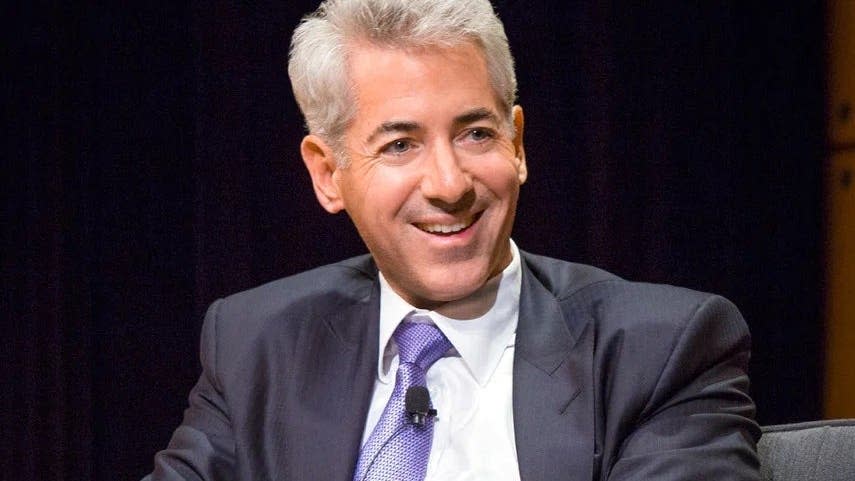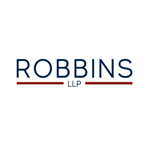If I Buy A $100,000 Annuity, How Much Cash Will It Pay Me Each Month?
An annuity is like a personal pension plan you buy for yourself. You give an insurance company a chunk of money – say $100,000 – and in return, they promise to pay you a steady income immediately or start later. It’s a way to ensure you don’t run out of money in retirement, giving you regular payments for a set number of years or even for the rest of your life.
Don’t Miss:
The payout can vary significantly depending on a few key factors, such as the type of annuity you choose, your age and gender, current interest rates and how long you want those payments to continue.
Here’s a look at how much cash you can expect each month from a $100,000 annuity:
Immediate Income Annuity:
-
For someone 65, you might get around $614 each month with an immediate income annuity.
-
If you’re a 65-year-old woman opting for a lifetime annuity, it might be closer to $608 a month.
Fixed Annuity with a Set Payout Period:
-
With a 5% interest rate and a 10-year payout, you could see about $1,055 a month.
-
If you extend that payout to 20 years, the monthly amount might drop to roughly $707.
How Age and Gender Play In:
-
Older people generally get higher monthly payouts because the payments are expected to last for a shorter time. For example, a 70-year-old might get slightly more than a 65-year-old.
-
Men typically receive a bit more than women because they have shorter life expectancies on average.
Trending: Are you rich? Here’s what Americans think you need to be considered wealthy.
You can purchase an annuity at almost any age, but the specifics such as the income you receive and the benefits available can vary based on your age at purchase.
Factors That Could Affect Your Payout
-
Interest Rates: Higher interest rates can mean more money in your monthly payouts.
-
Annuity Type: Immediate annuities start paying out shortly after you buy them, while deferred annuities kick in later, potentially giving you more per month due to accumulated interest.
-
Payout Duration: If you stretch out your payout period, the monthly checks might be smaller since the total amount is spread over more years.
Thinking About Alternatives?
If annuities don’t seem like the best fit for you, there are other ways to generate retirement income:
Dividend-Paying Stocks: These can give you regular income through dividends. If the company does well, those dividends might increase over time. The nice part? You can still access your original investment.
Bonds: Bonds, especially government or high-quality corporate ones, offer steady income through interest payments. They’re generally less risky than stocks but usually provide lower returns.
Real Estate: Owning rental properties can bring in regular income. While it requires some upfront capital and ongoing management, real estate can provide income and potential appreciation.
Systematic Withdrawal Plans: This approach involves withdrawing a fixed percentage from your investments each year. You keep control over your investments, but you risk running out of money if you withdraw too much too quickly.
Annuities can be great, but you’ll need to know the good and the bad to make an informed decision. Here are a few things to consider:
-
Liquidity: Annuities often tie up your money, making it tough to access in a pinch. Alternatives like stocks or bonds are more flexible.
-
Inflation: Fixed annuities give you consistent payments but don’t adjust for inflation. On the other hand, stocks or real estate might offer growth potential that helps keep up with inflation.
-
Longevity: Annuities are great for guaranteeing income for life, which is handy if you’re worried about outliving your savings. Other options might require a bit more careful planning to ensure they last through retirement.
Trending: Can you guess how many retire with a $5,000,000 nest egg? – How does it compare to the average?
This should give you a pretty good idea of what to expect and think about. Before jumping into an annuity contract, consider talking to a financial advisor. These experts can help determine what fits best with your goals and situations – whether that’s an annuity or another investment option.
Read Next:
“ACTIVE INVESTORS’ SECRET WEAPON” Supercharge Your Stock Market Game with the #1 “news & everything else” trading tool: Benzinga Pro – Click here to start Your 14-Day Trial Now!
Get the latest stock analysis from Benzinga?
This article If I Buy A $100,000 Annuity, How Much Cash Will It Pay Me Each Month? originally appeared on Benzinga.com
© 2024 Benzinga.com. Benzinga does not provide investment advice. All rights reserved.
Fluent, Inc. to Participate in the 17th Annual Barrington Research Virtual Fall Investment Conference
NEW YORK, Sept. 06, 2024 (GLOBE NEWSWIRE) — Fluent, Inc. FLNT, a partner monetization and customer acquisition solutions leader, today announced that Don Patrick, Chief Executive Officer, and Ryan Perfit, Interim Chief Financial Officer, will participate in the 17th Annual Barrington Research Virtual Fall Investment Conference on Thursday, September 12, 2024. Mr. Patrick and Mr. Perfit will be available for one-on-one meetings throughout the day.
About Fluent, Inc.
Fluent, Inc. FLNT has been a leader in performance marketing since 2010, offering customer acquisition and partner monetization solutions that exceed client expectations. Leveraging untapped channels and diverse ad inventory across partner ecosystems and owned sites, Fluent connects brands with consumers at the most optimal moment, ensuring impactful engagement when it matters most. Constantly innovating and optimizing for performance, Fluent unlocks additional revenue streams for partners and empowers advertisers to acquire their most valuable customers at scale. For more insights, visit https://www.fluentco.com/.
Contact Information:
Investor Relations
Fluent, Inc.
InvestorRelations@fluentco.com

Market News and Data brought to you by Benzinga APIs
© 2024 Benzinga.com. Benzinga does not provide investment advice. All rights reserved.
SkyRun Vacation Rentals Names Cord Thomas President and Chief Operating Officer
Premiere Property Management Franchise Taps QSR Veteran to Lead Brand’s Expansion and Development
BROOMFIELD, Colo., Sept. 5, 2024 /PRNewswire/ — SkyRun Vacation Rentals (SkyRun), a premier property management franchise in the vacation rental marketplace, today announced that Cord Thomas has been appointed President and Chief Operating Officer. His addition to the franchise’s leadership team comes as SkyRun looks to further its growth into new markets across the country, building on the record rate of expansion spearheaded by former CEO, Lukas Krause.
Krause will continue to serve the franchise as Chairman and shareholder. A transition he made as a means to continue providing high-level strategic support to the brand, while making room for new leadership to be able to focus on operational efficiencies and business growth.
Thomas comes to SkyRun after 16 years spent in franchising, where he served as President and Founding Partner for Elevation Burger, which sold back in 2019. More recently, he was the Chief Executive Officer for an award-winning Neapolitan pizzeria, where he drove businesses development, oversaw real estate and finance strategies, and grew system-wide profitability.
“In the last 20 years, SkyRun has developed an industry reputation for being the gold standard in short term rental quality and experience,” said Thomas. “I’m incredibly excited to join this team and further develop the brand’s industry standing; equipping franchisees with the resources and expertise they need to help homeowners navigate and thrive amidst the complexities of today’s vacation rental market.”
Over the next thirty days, Thomas will meet with franchisees across the country, taking the opportunity to listen and better understand the improvements that can be made under his leadership and how SkyRun can continue to provide best in class property management services to homeowners nationwide.
“The real value of SkyRun’s property management services lies in the localized operations that franchisees bring to each market. Through this model, homeowners work with a team of professionals that live, work, and play in the community and who understand the unique challenges that their neighbors face—all without sacrificing the tools, technology, and reach that are needed to stay ahead in an increasingly competitive rental landscape,” said SkyRun Co-founder and Managing Partner Steve Falk. “That’s our differentiating factor, which, when paired with Cord’s experience in scaling and operating emerging franchise brands, I’m confident will continue to build the SkyRun brand’s name and market share in the vacation rental space.”
To learn more about SkyRun Vacation Rentals and its franchise opportunities, visit www.skyrun.com/franchising.
ABOUT SKYRUN VACATION RENTALS
SkyRun is a rapidly growing vacation rental property management franchise with over 1,400 homes under management in 50 independently owned and operated locations. The brand represents the best of both worlds when it comes to vacation rental management by combining the advantages of local ownership and management with the efficiency, technology, and support of a national brand. Most recently, the franchise was named by Entrepreneur magazine as one of the Fast-Growing Franchises in North America, as well as being one of the country’s Top-Emerging Franchises. Whether you are a guest, a homeowner, or a franchisee—with SkyRun, your vacation rental dreams can become a reality sooner than you think.
MEDIA CONTACT: Conner Gossel, Fishman Public Relations, cgossel@fishmanpr.com or (937) 545-9812
![]() View original content to download multimedia:https://www.prnewswire.com/news-releases/skyrun-vacation-rentals-names-cord-thomas-president-and-chief-operating-officer-302236863.html
View original content to download multimedia:https://www.prnewswire.com/news-releases/skyrun-vacation-rentals-names-cord-thomas-president-and-chief-operating-officer-302236863.html
SOURCE SkyRun Vacation Rentals
Market News and Data brought to you by Benzinga APIs
© 2024 Benzinga.com. Benzinga does not provide investment advice. All rights reserved.
1 Vanguard ETF That Could Soar 37.1% Before the End of 2024, According to a Select Wall Street Analyst
Wall Street analysts don’t always make accurate predictions, but Tom Lee from Fundstrat Global Advisors has put together a string of impressive calls over the last couple of years. He said the S&P 500 index would hit 4,750 in 2023, and it closed the year at 4,769. He then predicted the S&P would hit 5,200 in 2024, which was the most bullish target on Wall Street at the time, and it surpassed that level within the first three months.
Lee also forecast a 50% gain this year for the Russell 2000, an index featuring approximately 2,000 of the smallest companies listed on U.S. stock exchanges. The potential for falling interest rates combined with cheap valuations are two key reasons for his prediction.
The Russell 2000 hit its high point for 2024 (so far) on July 16, and Lee came out on that very day and reiterated his bullish stance in an interview on CNBC. But the index has been trading down since then, and it’s sitting on a gain of just 10% for the year. That means it will have to climb by another 37.1% within the next four months to hit Lee’s target.
While that seems unlikely, the Vanguard Russell 2000 ETF (NASDAQ: VTWO) closely tracks the performance of the index, so it’s a simple way for investors to profit from Lee’s prediction if he turns out to be right.
The Vanguard ETF is a simple way to invest in small-caps
The composition of the Russell 2000 is very different from mainstream indexes like the S&P 500. The industrial sector is the largest in the Russell with an 18.9% weighting, followed by the healthcare sector at 15.1% and the financial sector at 15%. The largest sector in the S&P 500, on the other hand, is technology, with a sizable 31.4% weighting thanks to the rise of trillion-dollar tech giants like Apple, Microsoft, and Nvidia.
Plus, the top 10 holdings in the Vanguard Russell 2000 ETF represent just 3.2% of the total value of its portfolio, so its performance isn’t beholden to a handful of stocks:
|
Stock |
Vanguard ETF Portfolio Weighting |
|---|---|
|
1. Insmed |
0.41% |
|
2. FTAI Aviation |
0.40% |
|
3. Sprouts Farmers Market |
0.36% |
|
4. Vaxcyte |
0.31% |
|
5. Applied Industrial Technologies |
0.30% |
|
6. Fluor |
0.30% |
|
7. Fabrinet |
0,29% |
|
8. SPS Commerce |
0.29% |
|
9. UFP Industries |
0.29% |
|
10. Mueller Industries |
0.29% |
Data source: Vanguard. Portfolio weightings are accurate as of July 31, 2024, and are subject to change.
Insmed is a biotechnology company that develops therapies for rare diseases. It has a market capitalization of just $13.1 billion, and as the largest holding in the Vanguard ETF, it puts the size of the Russell 2000 companies in perspective.
Sprouts Farmers Market, on the other hand, is a grocery chain with over 400 stores (and growing) across America. It specializes in healthy and organic foods. Then, there is Fluor, a construction and engineering company that builds energy and urban infrastructure.
Outside of its top 10, the Vanguard ETF also holds popular names like clothing retailer Abercrombie and Fitch, cybersecurity powerhouse Tenable, and semiconductor-service company Axcelis Technologies. Simply put, the ETF (and, by extension, the Russell 2000) is very diversified.
Falling interest rates should benefit small-caps
“The time has come for policy to adjust.” Those were the words of Federal Reserve chairman Jerome Powell at the Jackson Hole Economic Symposium last month. The Fed has been locked in a battle to tame high inflation for the last two years, which saw the federal funds rate climb to a 23-year high of 5.33% in 2023, where it remains today.
But with the Consumer Price Index measure of inflation nearly back to the Fed’s 2% annualized target, the central bank looks set to cut rates at its next meeting on Sept. 17 and 18. In fact, according to the CME Group‘s FedWatch tool, there could also be cuts in both November and December.
Lower interest rates tend to benefit small companies more than their larger counterparts. Behemoths like Apple, Microsoft, and Nvidia are sitting on so much spare cash that they each return tens of billions of dollars to shareholders every year through dividends and stock buybacks. In other words, they don’t need to rely on debt financing.
Smaller companies, however, often borrow money to fuel their growth, and they tend to carry a high amount of floating-rate debt, which is highly sensitive to changes in interest rates. Falling rates will increase the borrowing capacity of small-cap companies and reduce their interest payments which will be a direct tailwind for their earnings.
Lee thinks those factors could also drive the valuation of the Russell 2000 higher. Right now, the index trades at a price-to-earnings (P/E) ratio of 17.7 (excluding companies with negative earnings), which is much cheaper than the S&P 500, which trades at a P/E ratio of 27.4.
With that said, investors pay a premium for the S&P 500 because of the quality of its constituents like Nvidia, Apple, and Microsoft, which have long-term track records of success, secure revenue streams, and fortress balance sheets. It’s possible the Russell 2000 will trade at a higher valuation when interest rates fall, but I don’t expect it to completely close the gap with the S&P.
Will Tom Lee be right?
Lee’s prediction for a 50% return in the Russell 2000 this year is ambitious. In fact, going all the way back to 1988, the index has never recorded an annual gain of 50% or more.
The Vanguard Russell 2000 ETF has delivered a compound annual return of 10.4% since its inception in 2010, so a 50% move would be highly unusual. That also represents a notable underperformance relative to the S&P 500, which has delivered a compound annual return of 13.7% over the same period.
Keep in mind that the federal funds rate was below 1% for the majority of the period between 2010 and 2022, and that wasn’t enough to propel the Russell to outsized returns. The Russell 2000 could climb further in the remainder of 2024, but it’s unrealistic to expect a 37.1% gain from here to reach Lee’s year-end target.
With that said, small caps might be a good place to invest some money as interest rates fall, so adding the Vanguard Russell 2000 ETF to a balanced portfolio isn’t necessarily a bad move.
Should you invest $1,000 in Vanguard Russell 2000 ETF right now?
Before you buy stock in Vanguard Russell 2000 ETF, consider this:
The Motley Fool Stock Advisor analyst team just identified what they believe are the 10 best stocks for investors to buy now… and Vanguard Russell 2000 ETF wasn’t one of them. The 10 stocks that made the cut could produce monster returns in the coming years.
Consider when Nvidia made this list on April 15, 2005… if you invested $1,000 at the time of our recommendation, you’d have $661,779!*
Stock Advisor provides investors with an easy-to-follow blueprint for success, including guidance on building a portfolio, regular updates from analysts, and two new stock picks each month. The Stock Advisor service has more than quadrupled the return of S&P 500 since 2002*.
*Stock Advisor returns as of September 3, 2024
Anthony Di Pizio has no position in any of the stocks mentioned. The Motley Fool has positions in and recommends Apple, Microsoft, Nvidia, and SPS Commerce. The Motley Fool recommends CME Group, Sprouts Farmers Market, and UFP Industries and recommends the following options: long January 2026 $395 calls on Microsoft and short January 2026 $405 calls on Microsoft. The Motley Fool has a disclosure policy.
1 Vanguard ETF That Could Soar 37.1% Before the End of 2024, According to a Select Wall Street Analyst was originally published by The Motley Fool
Billionaire Ray Dalio's Former Hedge Fund Is Buying These 3 Top Dividend Stocks. Should You?
Savvy investors often look to billionaire portfolios for quality dividend stock ideas. Ray Dalio, founder of Bridgewater Associates, has a stellar reputation for spotting promising investments. Despite Dalio’s retirement in 2022, his influence remains evident in the hedge fund’s recent moves.
In the second quarter of 2024, Bridgewater Associates purchased shares of three tier 1 dividend stocks: ExxonMobil (NYSE: XOM), Medtronic (NYSE: MDT), and Microsoft (NASDAQ: MSFT). Let’s examine each of these stocks to determine if they deserve a place in your dividend portfolio.
ExxonMobil: An energy giant with an attractive yield
ExxonMobil, one of the world’s largest integrated oil and gas companies, has long been a favorite among dividend investors. The company offers a compelling yield of 3.29% with a conservative payout ratio of 44.9%. Over the past decade, ExxonMobil has grown its dividend at a modest rate of 2.66% annually.
The stock’s performance has been mixed, with a 10-year return of 16.5% excluding dividends. However, when including reinvested dividends, the total return jumps to 80.1%. While impressive, this still lags the S&P 500‘s total return (including dividends) of 231% over the same period. ExxonMobil currently trades at an attractive forward price-to-earnings (P/E) ratio of 12.1.
Upside catalysts for ExxonMobil include its response to shareholder concerns, such as reduced spending, new board appointments, and emission reduction targets. The company’s shift toward liquids pricing and high-value integrated operations could improve cash margins, particularly with new volumes from the Permian Basin and Guyana.
However, ExxonMobil faces significant downside risks. The company’s continued investment in long-life hydrocarbon projects could lead to stranded assets if oil demand peaks and declines sooner than expected. Additionally, ExxonMobil’s relatively low investment in low-carbon businesses compared to peers may pose challenges in adapting to a changing energy landscape.
Medtronic: A top healthcare innovator
Medtronic, a global leader in medical technology, offers a compelling combination of stability and growth potential. The stock yields 3.15%, although its high payout ratio of 93.2% may raise some eyebrows. Over the past decade, Medtronic has grown its dividend at a healthy rate of 6.3% annually.
The company’s stock performance has been modest, with a 10-year return of 38.3% excluding dividends and a total return of 75.7% including reinvested dividends. Like ExxonMobil, this trails the S&P 500’s performance. Medtronic trades at a forward P/E ratio of 16.3.
Medtronic’s upside potential stems from its dominant market position in core heart devices, spinal products, insulin pumps, and neuromodulators. The company’s robust pipeline, including treatments for atrial fibrillation, mitral valve disease, and renal denervation for hypertension, could open up new large markets. Medtronic’s innovative approach to applying familiar technologies to new medical challenges is another strength.
On the downside, Medtronic faces increasing competition in the insulin pump market, which could threaten its leadership position. The company is also indirectly subject to Medicare reimbursement rates, and increasing pressure on payments could hurt profitability. Product recalls, although infrequent, remain a concern that requires ongoing attention and resources.
Microsoft: A tech giant with a growing dividend
Microsoft might not be the first name that comes to mind for dividend investors, but the tech giant has been steadily increasing its payout. The stock offers a modest yield of 0.73% with a conservative payout ratio of 24.8%. Over the past decade, Microsoft has grown its dividend at an impressive rate of 7.6% annually.
Where Microsoft truly shines is in its stock performance. The company has delivered a staggering 10-year return of 810% excluding dividends, and a total return of 965% including reinvested dividends. This significantly outperforms the S&P 500. Microsoft trades at a premium forward P/E ratio of 30.8, reflecting high growth expectations.
Microsoft’s upside potential is driven by its strong position in the public cloud market with Azure, which is benefiting from the evolution to hybrid and public cloud environments. The continued success of Microsoft 365, with customers willing to pay for better security and additional features, is another growth driver. Microsoft’s dominant positions in operating systems and office software serve as cash cows to fuel growth in other areas.
However, Microsoft faces some downside risks. The momentum in shifting to subscriptions is slowing, particularly in mature products like Office. The company lacks a meaningful mobile presence, which could be a disadvantage in an increasingly mobile-first world. Additionally, Microsoft is not the top player in some of its key growth areas, notably Azure and Dynamics, which could limit its potential in these markets.
Should you follow Bridgewater’s lead?
Dalio‘s Bridgewater Associates has been buying three diverse dividend stocks, each offering unique attributes for income-focused investors. ExxonMobil provides a high yield and long dividend history, but it operates in a rapidly changing energy sector. Medtronic offers stability and growth potential in the high-growth healthcare industry. Microsoft, while offering a lower yield, sports a strong dividend growth record backed by a powerful tech business.
Are these dividend stocks worth buying? For income investors, ExxonMobil, Medtronic, and Microsoft are always worth considering. These three companies have shown a rock-solid commitment to rewarding shareholders with regular dividend payments and increases to their quarterly cash distributions. They also sport entrenched market positions, ensuring long-term profitability.
So, if you’re looking for a trio of top dividend stocks to add to your portfolio, these three Bridgewater Associates holdings may be worth a closer look.
Should you invest $1,000 in Microsoft right now?
Before you buy stock in Microsoft, consider this:
The Motley Fool Stock Advisor analyst team just identified what they believe are the 10 best stocks for investors to buy now… and Microsoft wasn’t one of them. The 10 stocks that made the cut could produce monster returns in the coming years.
Consider when Nvidia made this list on April 15, 2005… if you invested $1,000 at the time of our recommendation, you’d have $661,779!*
Stock Advisor provides investors with an easy-to-follow blueprint for success, including guidance on building a portfolio, regular updates from analysts, and two new stock picks each month. The Stock Advisor service has more than quadrupled the return of S&P 500 since 2002*.
*Stock Advisor returns as of September 3, 2024
George Budwell has no position in any of the stocks mentioned. The Motley Fool has positions in and recommends Microsoft. The Motley Fool recommends Medtronic and recommends the following options: long January 2026 $395 calls on Microsoft, long January 2026 $75 calls on Medtronic, short January 2026 $405 calls on Microsoft, and short January 2026 $85 calls on Medtronic. The Motley Fool has a disclosure policy.
Billionaire Ray Dalio’s Former Hedge Fund Is Buying These 3 Top Dividend Stocks. Should You? was originally published by The Motley Fool
Billionaires Are Buying Retail Stocks, Shrugging Off Recession Fears
Benzinga and Yahoo Finance LLC may earn commission or revenue on some items through the links below.
Investors closely track investments made by billionaires worldwide, especially in a volatile market backdrop. While U.S. equities overwhelmingly rallied in August, key benchmark indexes traded lower during the first week of September as the markets waited for the release of key employment data. Market volatility has risen dramatically over the past week, as evident from the CBOE Volatility Index’s 31% gains over the past five days.
However, billionaires are shrugging off looming recession fears that have grappled the broader market, reflecting their faith in the U.S. economy. Some of the world’s wealthiest and most influential financiers are doubling down on retail stocks. These moves suggest deep confidence in the resilience of consumer-facing businesses.
Don’t Miss Out:
Retail Stocks: A Comeback Story
The retail sector has been at the center of economic debate recently. Rising inflation, supply chain disruptions, and geopolitical tensions have all contributed to a murky outlook for consumer markets.
Nonetheless, consumers are spending money despite the delayed rate cuts, as advanced retail sales rose by 1% month-over-month in July, beating the 0.2% consensus estimate.
“Once again, this was further evidence that the U.S. consumer still can surprise to the upside,” Richard de Chazal, macro analyst at William Blair, said. “This was another solid report, and inconsistent with a consumer who is on the brink of collapse.”
Furthermore, the U.S. GDP rose by an estimated 3% in the second quarter of 2024, according to data published by the Bureau of Economic Analysis.
This, coupled with noteworthy investments from Wall Street’s biggest names, could signal a bull market for retail stocks. Their investments often serve as a strong endorsement of their ability to grow and prosper in a fluctuating economy.
Bill Ackman’s Bet on Nike
With a net worth of over $9 billion, Bill Ackman is a controversial yet highly respected hedge fund manager known for his bold and contrarian investment bets. He often leverages his social media presence to generate enthusiasm regarding his latest investments and strategic bets.
Ackman spent the last few months trying to launch a new closed-end fund, Pershing Square USA, which could double his total assets under management. However, his fund’s initial public offering was scrapped on July 31 as he couldn’t garner the desired funding.
Nonetheless, Ackman’s latest investment in Nike, Inc. (NYSE:NKE) has stirred investors, as the stock made a stellar comeback after recording its worst-ever performance in June. As of the end of the second quarter of 2024, Ackman’s Pershing Square Capital Management holds over three million shares of NKE.
Nike’s slowing sales have been a cause for concern for investors. The company expected its earnings to decline by at least 10% in the fiscal first quarter of 2025 (ended August) due to sluggish demand from China. Consequently, NKE stock declined by 21% intraday following its earnings release.
Ackman’s endorsement has rejuvenated optimism about Nike stock, as NKE shares have increased by over 9% over the past month.
Read More:
Warren Buffett’s Strategic Move With Ulta Beauty Investment
Stock market guru Warren Buffett’s investment portfolio was scrutinized after the world’s sixth-richest man reduced his stake in tech behemoth Apple Inc. (NASDAQ:AAPL) last quarter. Buffett also held $277 billion in cash as of the end of the second quarter, a move that drew significant attention from Wall Street, with Elon Musk labeling it “wild.”
Buffett also invested a significant portion of his portfolio in Ulta Beauty Inc. (NASDAQ:ULTA), with his total investment valued at approximately $266 million as of June 30.
However, the company’s financials took a hit in the last quarter, as its revenues and earnings were lower than the consensus estimates for the quarter ended August 3. But Ulta Beauty’s CEO Dave Kimbell chalked this up to an “unanticipated operational disruption,” claiming they had “actions underway to address the trends.”
Nonetheless, Ulta Beauty has been taking active steps to accelerate sales, primarily through endorsements with high-profile celebrities and upscaling its loyalty program and promotional levers. The Oracle of Omaha has invested in ULTA stock, which has risen by over 10% over the past month.
A 9% Return In Just 3 Months
EquityMultiple’s ‘Alpine Note — Basecamp Series’ is turning heads and opening wallets. This short-term note investment offers investors a 9% rate of return (APY) with just a 3 month term and $5K minimum. The Basecamp rate is at a significant spread to t-bills. This healthy rate of return won’t last long. With the Fed poised to cut interest rates in the near future, now could be the time to lock in a favorable rate of return with a flexible, relatively liquid investment option.
What’s more, Alpine Note — Basecamp can be rolled into another Alpine Note for compounding returns, or into another of EquityMultiple’s rigorously vetted real estate investments, which also carry a minimum investment of just $5K. Basecamp is exclusively open to new investors on the EquityMultiple platform.
Looking for fractional real estate investment opportunities? The Benzinga Real Estate Screener features the latest offerings.
This article Billionaires Are Buying Retail Stocks, Shrugging Off Recession Fears originally appeared on Benzinga.com
Volkswagen's Battery Plant In Germany To Operate At Reduced Capacity Amid Financial Strains
Volkswagen AG’s VWAGY PowerCo battery subsidiary has decided to operate its Salzgitter plant in Germany at half its planned capacity. This decision comes in the wake of financial pressures and a dip in the demand for electric vehicles.
What Happened: The company’s technology chief, Thomas Schmall, announced during a staff meeting that only one of the two planned production lines at the plant will be constructed. The plant, which has space for two lines, will now have a reduced capacity of 20 gigawatt hours, Reuters reported on Friday.
Employees voiced their fears about the second line being permanently abandoned as part of a larger cost-saving strategy at Volkswagen. This news follows the company’s startling revelation earlier this week about potential plant shutdowns and job cuts, stating it has a narrow window of 1-2 years to “turn things around.”
Despite the cutbacks, a PowerCo spokesperson assured that the company will commence production at the Salzgitter plant in 2025 as planned.
“The further expansion of production capacities will be driven forward flexibly and in line with demand,” the spokesperson clarified.
Why It Matters: This decision by Volkswagen comes on the heels of Tesla CEO Elon Musk questioning Volkswagen’s proposed $5 billion investment in Rivian Automotive. Musk had expressed skepticism about where the German automaker would source the funds for this investment, especially considering reports of potential factory closures in Germany.
Price Action: Volkswagen closed at $11.20 on Thursday in the OTC and was trading 2.50% lower in the after-hours, according to Benzinga Pro.
Read Next:
Image via Shutterstock
This story was generated using Benzinga Neuro and edited by Pooja Rajkumari
Market News and Data brought to you by Benzinga APIs
© 2024 Benzinga.com. Benzinga does not provide investment advice. All rights reserved.
The Campbell Set to Deliver Elevated Living in Charlotte's South End
Refined Apartments Redefining Luxury Living Now Pre-leasing
CHARLOTTE, N.C., Sept. 5, 2024 /PRNewswire/ — The Campbell, a 12-story, 117-unit boutique multifamily community in the heart of Charlotte’s South End and adjacent to the charming Dilworth neighborhood, is pleased to announce that it is now pre-leasing units with move-ins starting this month. Abacus Capital developed the project in partnership with JE Dunn Capital Partners and L&B Realty Advisors. Upon delivery, The Campbell will be professionally managed by Greystar.
“We’re very excited to begin pre-leasing at The Campbell,” Mason Ellerbe, a Partner at Abacus Capital said. “The boutique scale, unimpeded city views, designer finishes and unique and highly walkable location on the Dilworth side of South End will set this project apart from the multifamily stock that has historically been built in the submarket.”
The Campbell’s residences will be differentiated from the rest of the South End rental submarket by the generous size of its units, averaging nearly 1,200 SF, roughly 50% larger than the “typical” South End apartment.
With one-, two- and three-bedroom floorplans that range from 746 SF to 1,718 SF The Campbell is designed to cater to the city’s most discerning renters. Designer finishes include chef’s kitchens equipped with gas stoves, floor-to-ceiling windows, custom walk-in closets and smart technology throughout. Built-in wine fridges and expansive balcony terraces will be a standard feature in the majority of The Campbell’s residences. The parking garage will occupy floors one through four with apartments across floors five through twelve. Bordered by the Dilworth neighborhood and surrounding low-rise buildings, every apartment will have a sweeping view above the city’s famous tree canopy.
A sky terrace on the twelfth floor with city skyline views is the highlight of the community amenities. Others include a state-of-the-art fitness center, resident lounge with golf simulator and catering kitchen, private co-working spaces with a reservable conference room, dedicated parking garage with gated access, dog spa and bike room as well as onsite retail.
The Campbell will boast a Walk Score of 96. The community provides convenient access to local retail and transportation options, with Publix located 0.1 miles away and the East-West Lynx Light Rail station 0.25 miles away.
Wes McAdams, managing partner at Abacus Capital, said, “We intentionally positioned the project to appeal to a more discerning renter cohort than the average South End apartment building. With the best retail and restaurants in South End at Atherton Mill and the Design District out The Campbell’s front door, and the historic Dilworth neighborhood’s tree-lined streets out its back door, future residents should be able to enjoy all the benefits of elevated city living,” he said.
The Campbell was developed on the historical site of Campbell’s Greenhouses, a beloved plant nursery that supplied residents of the city with beautiful orchids for decades before selling in late 2022 to make way for Abacus’ high-rise apartment project by the same name. Residents can expect to see subtle nods to the site’s botanical history in The Campbell’s custom art and curated interior design throughout the project.
Abacus indicated that it should have several exciting retail announcements to make in the weeks ahead as it prepares for the first residents to take occupancy at The Campbell.
For more information, or to schedule a tour, please visit thecampbellclt.com.
About Abacus Capital
Launched in 2018, Abacus Capital is a multi-strategy product type agnostic real estate investor that seeks out special situations or other tactical opportunities in which to deploy its capital, institutional experience, relationships and hands-on, solution-oriented approach to creating and/or unlocking value and driving investment outperformance on behalf of its partners and clients. The principals of Abacus Capital have over 40 years of real estate investing experience and have acquired or developed over 17.0M square feet of commercial real estate with a total capitalization in excess of $4.0B. Please visit www.abacuscapitalusa.com for more information.
![]() View original content to download multimedia:https://www.prnewswire.com/news-releases/the-campbell-set-to-deliver-elevated-living-in-charlottes-south-end-302239646.html
View original content to download multimedia:https://www.prnewswire.com/news-releases/the-campbell-set-to-deliver-elevated-living-in-charlottes-south-end-302239646.html
SOURCE Greystar
Market News and Data brought to you by Benzinga APIs
© 2024 Benzinga.com. Benzinga does not provide investment advice. All rights reserved.
Trump just called for a U.S. sovereign wealth fund. What would that look like?
The U.S. may be home to some of the world’s biggest investors, but unlike other countries such as Saudi Arabia and Singapore, the federal government doesn’t have an investment arm of its own.
That might change if Donald Trump is elected to a second term as president. Speaking at the Economic Club of New York on Thursday, Trump called for the creation of a sovereign wealth fund—a term that describes state-owned organizations that operate like hedge funds or private equity firms, pursuing different financial strategies such as buying up stock in public companies or backing startups and other private companies.
In his remarks, Trump kept the proposal vague, saying the fund would invest in “great national endeavors for the benefit of all of the American people” and arguing that other countries have sovereign wealth funds, but “we have nothing.” He added that the government could call its investing firm something other than a “sovereign wealth fund,” which, he said, may not be “appropriate.”
A history of sovereign wealth
While Trump may be looking to other countries as inspiration for his idea, the creation of sovereign wealth funds has typically coincided with budget surpluses, often as a result of oil booms. One of the first examples was Kuwait, which created an investment authority in 1953, followed by Norway’s Norges Bank Investment Management in 1967, and the Abu Dhabi Investment Authority in 1976; all three managed surplus oil revenue.
Even the U.S. has its own homegrown fund born out of oil money, with Alaska establishing one in 1976 that has yielded an annual payout to every state citizen since 1980. In 2023, every Alaskan—including children—received $1,312.
In recent years, sovereign wealth funds—especially from Asia and the Middle East—have become major players in the tech industry. Temasek, a Singaporean investment company that counts the country’s government as the sole equity shareholder, has backed top public companies such as Microsoft and Nvidia, as well as private companies—including, disastrously, FTX. Temasek also backs other funds, including the OpenAI investor Alpha Intelligence Capital, which is closing a $250 million second fund.
Another prominent example is Saudi Arabia’s Public Investment Fund, which owns a venture arm called Sanabil. Top U.S. funds including Andreessen Horowitz, Coatue, and KKR have drawn scrutiny for receiving Saudi capital from Sanabil, especially after the assassination of journalist Jamal Khashoggi by agents of the Saudi government.
‘America First’
Without additional context from Trump, it’s unclear how the U.S. sovereign wealth fund he proposed would operate, especially without a clear source of funding—or direction for capital investments.
Matt Bruenig, a progressive lawyer and founder of the think tank People’s Policy Project, has previously proposed a “social wealth fund for America,” about which he posted again on X after Trump’s remarks. Under Bruenig’s plan, the fund would tackle wealth inequality by issuing every American a share of ownership and accumulating assets such as stocks, bonds, and real estate. Citizens would not be permitted to sell their shares, but would earn a universal basic dividend, similar to the Alaskan model.
The sovereign wealth fund was not the only proposal from Trump in his speech on Thursday. He also announced that he would establish a “government efficiency commission” headed by Elon Musk that would be tasked with completing an audit of the government.
“I look forward to serving America if the opportunity arises,” Musk posted on X.
This story was originally featured on Fortune.com
Investor Notice: Robbins LLP Informs Stockholders of the Class Action Lawsuit Filed Against ZoomInfo Technologies, Inc.
SAN DIEGO, Sept. 05, 2024 (GLOBE NEWSWIRE) — Robbins LLP informs investors that a shareholder filed a class action on behalf of all purchasers of ZoomInfo Technologies, Inc. ZI Class A common stock between November 10, 2020 and August 5, 2024. ZoomInfo is a software and data company that provides customer analytics and intelligence to sales and marketing teams.
For more information, submit a form, email attorney Aaron Dumas, Jr., or give us a call at (800) 350-6003.
The Allegations: Robbins LLP is Investigating Allegations that ZoomInfo Technologies, Inc. (ZI) Misled Investors Regarding Demand for its Product
According to the complaint, during the class period, defendants failed to disclose to investors: (a) that ZoomInfo’s financial and operational results during the Class Period had been temporarily inflated by the ephemeral effects of the COVID-19 pandemic, which had pulled-forward demand for the Company’s database of digital contact information; (b) that material portions of ZoomInfo’s existing customer base were attempting to either substantially reduce their use of the Company’s product or abandon it altogether; (c) that ZoomInfo had used manipulative and coercive auto-renew policies and threats of litigation to force customers into remaining with the Company for an additional contractual term even though they did not want to; (d) that ZoomInfo’s coercive customer retention tactics had materially damaged the Company’s customer relationships, client franchise, and competitive advantages, and created a hidden demand cliff for costumer contract renewals in future periods; (e) that ZoomInfo’s reported accounts receivable were materially comprised of debts owed by high-risk small business customers that had a high likelihood of non-payment and had been induced to transact with the Company through a credit program the Company implemented in 2022; (f) that ZoomInfo’s allowance for credit losses was materially inadequate and understated the risk of non-payments by the Company’s customers; and (g) that as a result of (a)–(f), above, ZoomInfo’s reported revenues, operating income, and customer and retention metrics were materially overstated.
As a result, the price of ZoomInfo Class A common stock declined from a class period high of over $79 per share to just $8 per share by the end of the class period, a 90% decline. Further, Defendants, sold billions of dollars’ worth of ZoomInfo stock at artificially inflated prices before the truth was revealed.
What Now: You may be eligible to participate in the class action against ZoomInfo Technologies, Inc. Shareholders who want to serve as lead plaintiff for the class must submit their application to the court by November 4, 2024. A lead plaintiff is a representative party who acts on behalf of other class members in directing the litigation. You do not have to participate in the case to be eligible for a recovery. If you choose to take no action, you can remain an absent class member. For more information, click here.
All representation is on a contingency fee basis. Shareholders pay no fees or expenses.
About Robbins LLP: Some law firms issuing releases about this matter do not actually litigate securities class actions; Robbins LLP does. A recognized leader in shareholder rights litigation, the attorneys and staff of Robbins LLP have been dedicated to helping shareholders recover losses, improve corporate governance structures, and hold company executives accountable for their wrongdoing since 2002. Since our inception, we have obtained over $1 billion for shareholders.
To be notified if a class action against ZoomInfo Technologies, Inc. settles or to receive free alerts when corporate executives engage in wrongdoing, sign up for Stock Watch today.
Attorney Advertising. Past results do not guarantee a similar outcome.
A photo accompanying this announcement is available at:
https://www.globenewswire.com/NewsRoom/AttachmentNg/1cfa0f39-b1c3-45c9-81de-ad0d12d01698

Market News and Data brought to you by Benzinga APIs
© 2024 Benzinga.com. Benzinga does not provide investment advice. All rights reserved.












